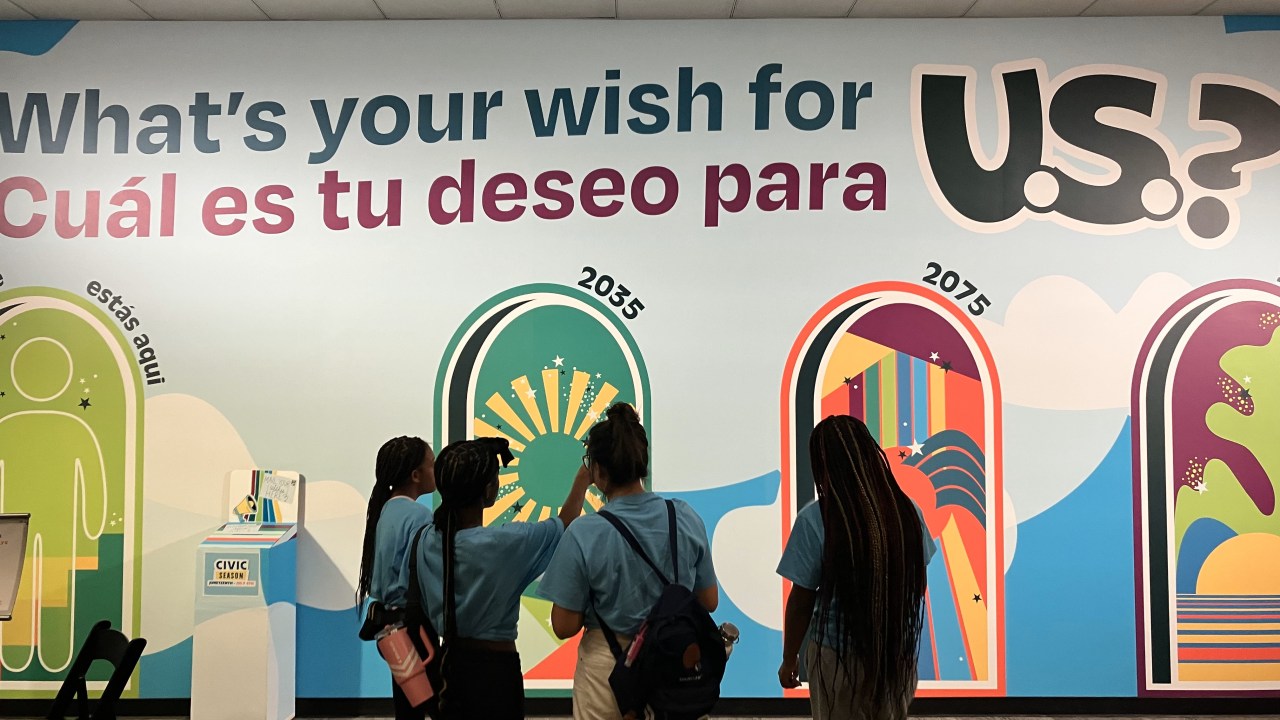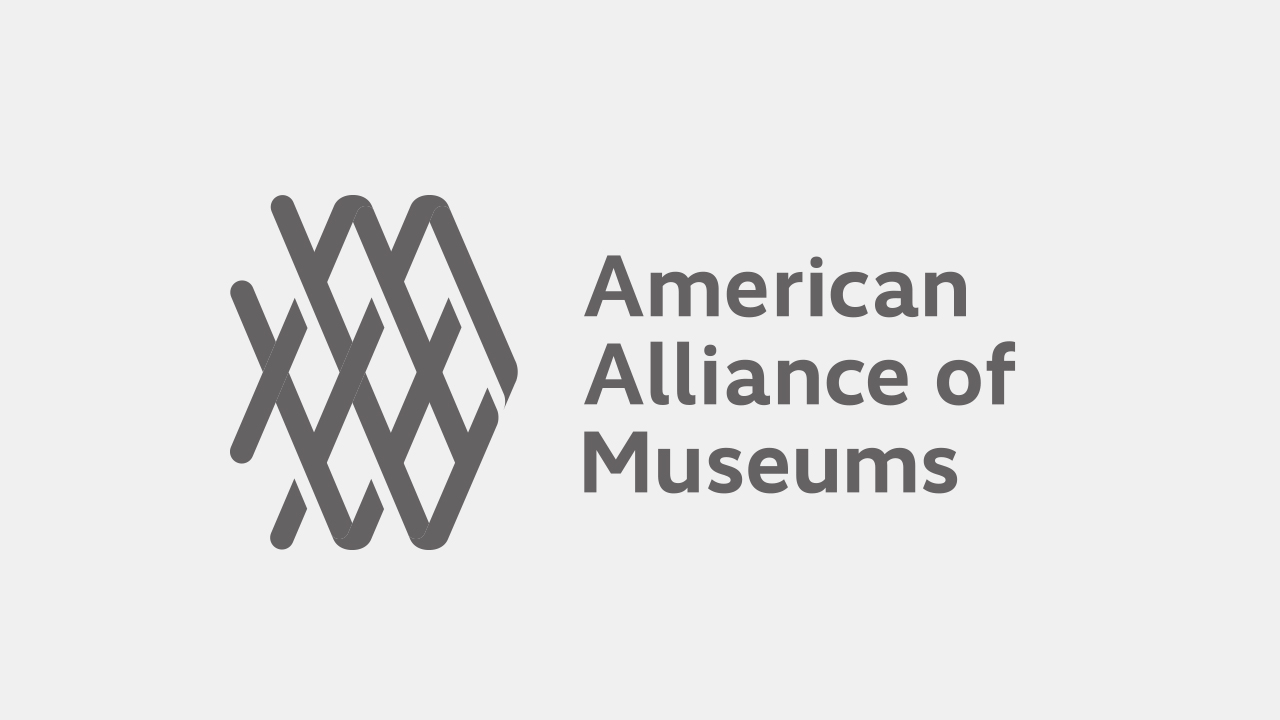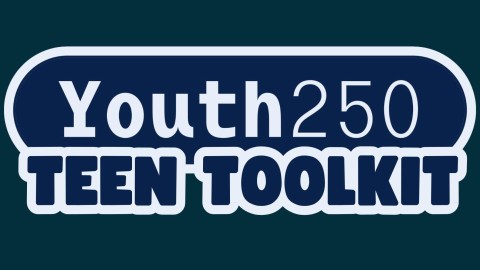
In 2021, history museums across the nation, working in collaboration with one another and with Gen Z-ers through Made By Us, generated an idea to link together Juneteenth and the Fourth of July in a new tradition – Civic Season. Civic Season is an annual ritual to learn and grow as citizens, catalyzed by hundreds of museums nationwide that host events and share resources.
In its fifth year, the 2025 Civic Season has taken on a forward-looking lean with the launch of a new featured program, What’s Your Wish For U.S.? Across the United States, over two dozen participating museums are inviting visitors to imagine the future of the country in 10, 50 or 100 years – and add that wish to a living mural hosted at a museum, or online at OnOur250th.org, created by The New York Historical.
What makes these Wish Walls particularly significant for the museum field is how they put today’s visitors in conversation with those of the future – the people, and nation, that we will be in 50 or 100 years. Visitors don’t just consume historical information; they contribute to an ongoing national dialogue about values, aspirations, and civic responsibility.
The flagship Wish Wall will be at the Smithsonian’s National Museum of American History, where the Civics Pavilion features daily programming in addition to the wish-writing activity.
From past to future, in the nation’s capital
At the Smithsonian’s National Museum of American History in Washington, D.C., What’s Your Wish For U.S. is the centerpiece of the Civics Pavilion. Working with Made By Us, we commissioned 25-year-old graphic designer Katie Costa to create a 28-foot-long mural, where the visitors to the museum will be invited to write, share, and see wishes from other visitors on the mural. Costa’s 28-foot mural features “portals” to the years 2035, 2075, and 2125, where visitors can post their written wishes for the future. The installation asks fundamental questions: Who will we be? What kind of country do we want to build?
By July 4, we imagine tens of thousands of wishes covering the mural, creating a rich tapestry of ideas, hopes, wishes from the public, visitors to the museum, who hope, wish for a bright future. The wall, the wishes, creates an opportunity for us to talk with the public, with one another, visitor to visitor about their wishes, and importantly, the actions that each of us can take to help that wish come true.
Many of those wishes after July 4 will be turned into a time capsule, held at the Smithsonian Institution Archives, to be reopened on Juneteenth 2075—fifty years from now.
The wish wall provided the museum an opportunity to fill the space every day with civics programming, from zine making to seed garden building to a visit from the Thomas Jefferson re-enactor at Monticello. A full calendar of events includes chocolate sampling, curator talks, meet the artist, and more. The robust set of programs and presence of the wish wall compelled D.C. Mayor Muriel Bowser to issue a proclamation for Civic Season to be held in D.C. between Juneteenth and July 4th 2025.
“Writing and sharing your wish on the Wish Wall at the Smithsonian’s National Museum of American History holds unique beauty. This act not only inspires you to actively pursue your dreams but also encourages others to connect with the many shared aspirations, fostering a sense of community focused on realizing these hopes for our nation’s future. Civic Season is remarkable because it motivates individuals to take action and communities to collaborate for each other’s betterment.”
Adam Rozan, Smithsonian’s National Museum of American History
Wishes find their way to ribbons, fabric and seed paper
From the Senator John Heinz History Center in Pittsburgh to the Idaho State History Museum in Boise, museums nationwide are installing similar wish walls that invite visitors to envision and articulate their hopes for America’s future. This represents a fundamental shift in how museums engage with their communities.
The initiative emerges from a recognition that as America approaches its 250th anniversary in 2026, museums have a unique opportunity—and perhaps responsibility—to help citizens engage not just with historical narratives, but with the ongoing work of democracy and nation-building.
At the Theodore Roosevelt Presidential Library, being built in Medora, ND, the staff offices include a wish wall focused on conservation, given Roosevelt’s presidential focus on conservation efforts. Their wish wall runs from World Environment Day, June 5, to National Wildlife Day, September 4.
As part of the 250th commemorative exhibition, “Give Me Liberty: Virginia & The Forging of a Nation,” on display at the Virginia Museum of History & Culture, visitors are encouraged to think about their actions in helping liberty grow for future generations. The in-exhibition interactive, “Our Living Revolution of Ideas,” asks the visitor: As you reflect on your experiences and consider the legacy of the American Revolution, what action can you take to continue planting the seeds of liberty in Virginia liberty? Taking a piece of seed paper, write down one thing you can do for your community. Plant it and watch as beautiful wildflowers grow from your idea!
At the Idaho State Museum, they’re using fabric; at the Heurich House Museum in Washington, D.C. they are creating a ribbon walkway visible from the street. In all, 30 museums are taking part – see the full list here.
“This is an invitation for visitors to dream with unrestrained possibility and to wish for something greater than each of us can accomplish alone,” explains Katie Costa, the 26-year-old graphic designer who created the flagship Wish Wall at the Smithsonian. “This piece is a reminder that our future is not fixed. It’s ours to reimagine, together.”
A lasting legacy – in the public interest
As the project was getting off the ground, The New York Historical came in with a bold idea to create a simple, easy to use web platform inviting birthday wishes for America’s 250th. The design emulates a wall of sticky notes and is open to anyone to participate. OnOur250th.org has already had participation by hundreds of classrooms, community groups, and individuals. It was recently featured on Morning Joe and in the New York Times.
The wishes shared online at OnOur250th.org will enter The New York Historical’s collection, while the wishes added to the Smithsonian installation have the chance to be included in a 50-year time capsule stored at the Smithsonian Institution Archives, to be opened during Civic Season 2075. This creates a direct line of communication between today’s museum visitors and Americans 50 years in the future—transforming momentary museum visits into contributions to historical record.
The implications for museum practice are profound. Rather than simply preserving artifacts from the past, these wish walls are actively creating primary source materials for future historians and museum professionals. They’re documenting not just what happened, but what people hoped would happen.
Museums interested in hosting Wish Walls can learn more at thecivicseason.com. The initiative continues through July 4, 2025, with many installations extending beyond Civic Season.







